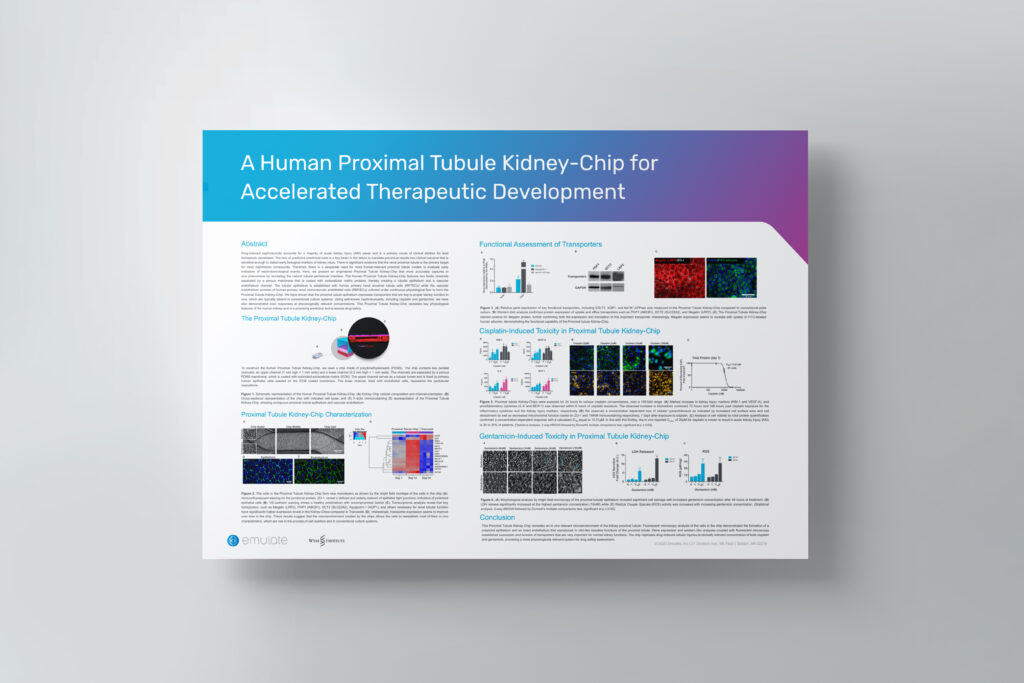Abstract
Drug-induced nephrotoxicity accounts for a majority of acute kidney injury (AKI) cases and is a primary cause of clinical attrition for lead therapeutic candidates. The lack of predictive preclinical tools is a key factor in the failure to translate preclinical results into clinical outcome that is sensitive enough to detect early biological markers of kidney injury. There is significant evidence that the renal proximal tubule is the primary target for most nephrotoxic compounds. Therefore, there is a desperate need for more human-relevant proximal tubule models to evaluate early indicators of nephrotoxicological events. Here, we present an engineered Proximal Tubule Kidney-Chip that more accurately captures in vivo phenomena by recreating the natural tubular-peritubular interface. The Human Proximal Tubule Kidney-Chip features two fluidic channels separated by a porous membrane that is coated with extracellular matrix proteins, thereby creating a tubular epithelium and a vascular endothelium channel. The tubular epithelium is established with human primary renal proximal tubule cells (RPTECs) while the vascular endothelium consists of human primary renal microvascular endothelial cells (RMVECs) cultured under continuous physiological flow to form the Proximal Tubule Kidney-Chip. We have shown that the proximal tubule epithelium expresses transporters that are key to proper kidney function in vivo, which are typically absent in conventional culture systems. Using well-known nephrotoxicants, including cisplatin and gentamicin, we have also demonstrated toxic responses at physiologically relevant concentrations. This Proximal Tubule Kidney-Chip recreates key physiological features of the human kidney and is a promising predictive tool to assess drug safety.

